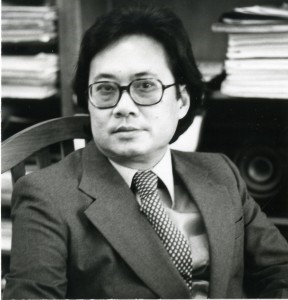Eric Lye Memorial Forum and Dinner
MIRACLES AND MIRAGES: ARCHITECTURAL AND URBAN PLANNING EDUCATION IN CHINA BEYOND THE MASTER PLAN
 Eric Lye Kum-chew, visionary architect, educator and Renaissance intellectual made his mark on generations of architects as Chair Professor and Dean in HKU Faculty of Architecture. This autumn marks the tenth anniversary of his passing away (September 19th 2003) and in memory we are hosting a forum and evening dinner to introduce Eric’s legacy to a new generation – those who, as he foresaw, are having to think about the realities of implementing cities beyond the master plan.
Eric Lye Kum-chew, visionary architect, educator and Renaissance intellectual made his mark on generations of architects as Chair Professor and Dean in HKU Faculty of Architecture. This autumn marks the tenth anniversary of his passing away (September 19th 2003) and in memory we are hosting a forum and evening dinner to introduce Eric’s legacy to a new generation – those who, as he foresaw, are having to think about the realities of implementing cities beyond the master plan.
In 2007, the current Dean, Chris Webster, gave a keynote to a national meeting of Chinese urban planners entitled: ‘after 30 years of design-and-build, what will become of your cities in the next 30 years?’ The very last keynote that Eric Lye gave in the Mainland was entitled “Miracles and Mirages’ and spoke of the allure and illusion of big city plans. Cities take on a life of their own once they leave the drawing board and the real miracle is how cities relentlessly self-organise around those designs, often, in spite of them. The miracles have multiplied since Eric’s passing and China’s horizons glitter with urban mirages. Predicting what those cities will become in reality and anticipating this in their physical and institutional design, requires more than design education and requires a re-alignment of knowledge within and between the traditional professional silos responsible for producing the built environment.
In 1978, Professor Lye, Mr. Andrew Lee and Mr. Joseph Ho led a delegation of the Hong Kong Institute of Architects to attend the 13th Triennial Congress of UIA in Mexico City to receive the top UIA International Student Design Competition awarded to the two HKU students, Mr. Wong Wah Sang and Ms. Au Chung Leung Joanlin. This is the first international competition won by the students of Professor Lye and it marked a significant international recognition of the HKU School of Architecture, as subsequent students also won top awards in UIA International Student Design Competition.
Eric Lye was an inspirational teacher and visionary and in 1984 made a tour of China’s top universities to discuss methods of teaching in architectural schools. This resulted in an important milestone architectural educational conference held in HKU in [1986 and 1990]. On October 26th, 2013, thirty years later, we invite you to a follow-up forum to discuss the architectural pedagogy suitable for the next era of urbanization in China. For another 15 years at least, design-and-build will continue in secondary and tertiary cities and below, right down to rural towns and villages, the latter now firmly embraced within China’s urbanization policy. Most primary cities, however, have encroached as far as they can into the surrounding countryside. Developable land has run out and attention is turning to urban regeneration, renewal, re-use, brown-field development and optimizing urban performance along dimensions other than the revenue-maximisation that has driven urban plans in the last three decades. The principal driver of rapid urban expansion – the land leasing based urban financing model of China’s cities, is likely to transform gradually into a property taxation based municipal finance model and this, plus the drying-up of green land supply and other influences will fundamentally change the operation of the city growth machine and all who work within it.
HKU Faculty of Architecture, with its departments and divisions of architecture, urban planning and design, construction and real estate, conservation and landscape is well placed to host a forum on the implication of these changes for architecture and urban planning education. Hong Kong’s urban planners and designers work in a mature, land-scarce land economy and for years have taken a multi-disciplinary (design-law-economics-community engagement) approach to planning and managing development in the city.
We invite Mainland colleagues, and others from the region, to attend this half-day forum where schools of architecture and planning can take stock of what it means to plan China’s cities in an era of slower growth, maturing economies, a shift from state-organised primary land markets to western-style secondary land markets, a shift away from land sales as a source of municipal finance, greater emphasis on conservation and green infrastructure and more complex urban performance goals.
Chris Webster
